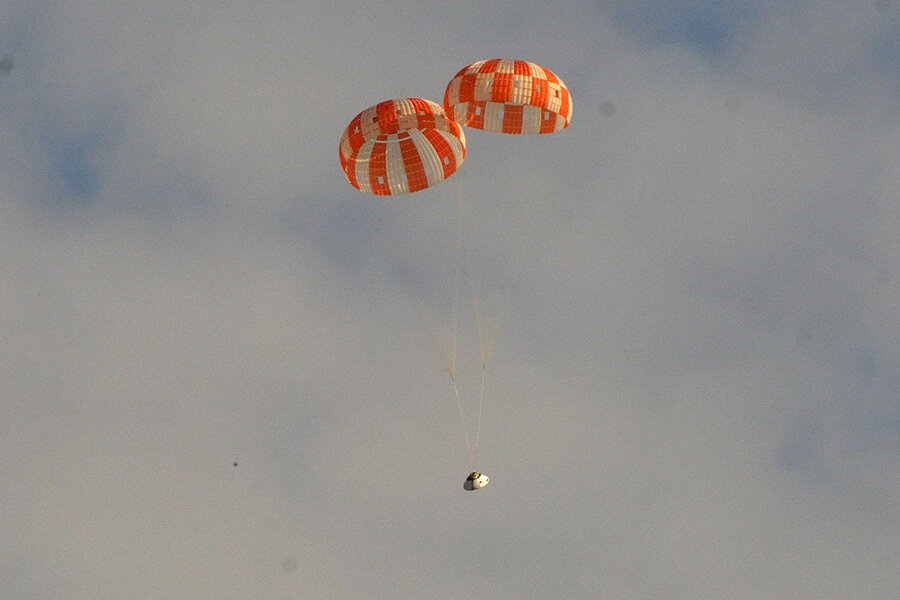Orion parachute test: Sometimes failure means success
Loading...
Sometimes you have to fail in order to succeed, at least that’s the theory NASA scientists have subscribed to with their recent test of the Orion spacecraft.
Orion, which is being designed for deep-space travel and could one day take astronauts to Mars, received a bit of a boost Wednesday after a successful parachute failure test.
A representative version of the spacecraft was shoved out of a military aircraft flying more than six miles above the ground in the arid desert of the Army's Yuma Proving Ground in Arizona.
The model capsule was able to touch down successfully, admittedly with a few bumps and bruises, even after engineers intentionally failed two different parachutes that are part of the spacecraft’s procedure to stabilize and slow itself down for landing.
Orion has 11 total parachutes, five of which were relevant to this test. Researchers simulated a failure scenario in which one of the two drogue parachutes, which are "used to slow and stabilize [the spacecraft] at high altitude, and one of its three main parachutes, used to slow the crew module to landing speed, did not deploy," NASA explained in a statement on Wednesday.
“We test Orion’s parachutes to the extremes to ensure we have a safe system for bringing crews back to Earth on future flights, even if something goes wrong,” CJ Johnson, project manager for Orion’s parachute system said in the statement. “Orion’s parachute performance is difficult to model with computers, so putting them to the test in the air helps us better evaluate and predict how the system works.”
This is simply the latest in a long series of Earthbound tests of Orion’s functionality before it sets out into the cosmos on missions. The parachute systems have been stressed repeatedly in the past, and, besides a few engineering issues in the beginning of the program, they have passed with flying colors.
There will be two more tests in the current series of evaluations before NASA starts working on putting the spacecraft through its paces in preparation for manned flight testing. That next series will include eight airdrops over a three-year period that will put the final design through extreme conditions to ensure that any astronauts that travel in Orion will get home safely.
The test of Orion’s contingency system follows another important successful test in December in which the spacecraft completed its first trip into outer space.
In that brief sojourn into space, Orion traveled twice through the Van Allen belt where it was subject to periods of intense radiation, and ascended 3,600 miles above Earth. Orion also successfully achieved speeds of 20,000 miles per hour and endured temperatures approaching 4,000 degrees Fahrenheit on reentry.
Orion is scheduled to make two more flights between now and the end of 2018, including the first crewed mission. After that, the craft will likely fly one mission per year.
The spacecraft is destined to take over the reins of American manned space travel from the decommissioned shuttle, and is NASA’s first deep-space capsule in forty years.
Even though NASA says manned missions in Orion won’t begin until at least 2020, the possibility of discovery and missions to Mars and other celestial bodies has astronauts excited and ready to launch ahead into the reaches of space.
“I think you’d be hard-pressed to find an astronaut – past, present, or future – who wouldn’t love to fly in Orion,” said Rex Walheim, a space shuttle mission specialist and an astronaut liaison to the team building the craft told The Christian Science Monitor’s Pete Spotts. following last year’s test flight. “This is the true exploration that we live for.”






